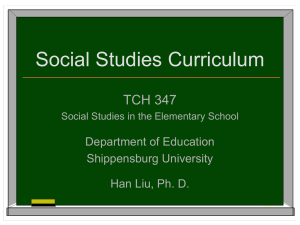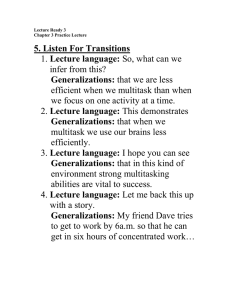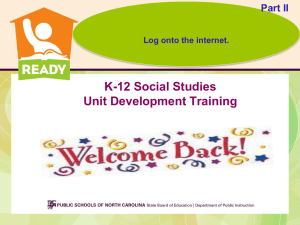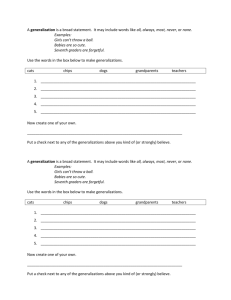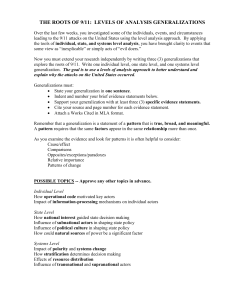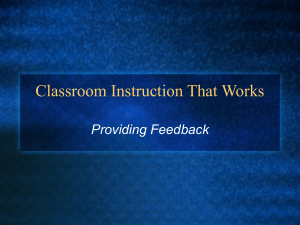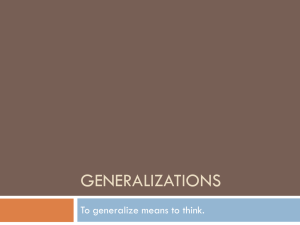The concept of concepts
advertisement
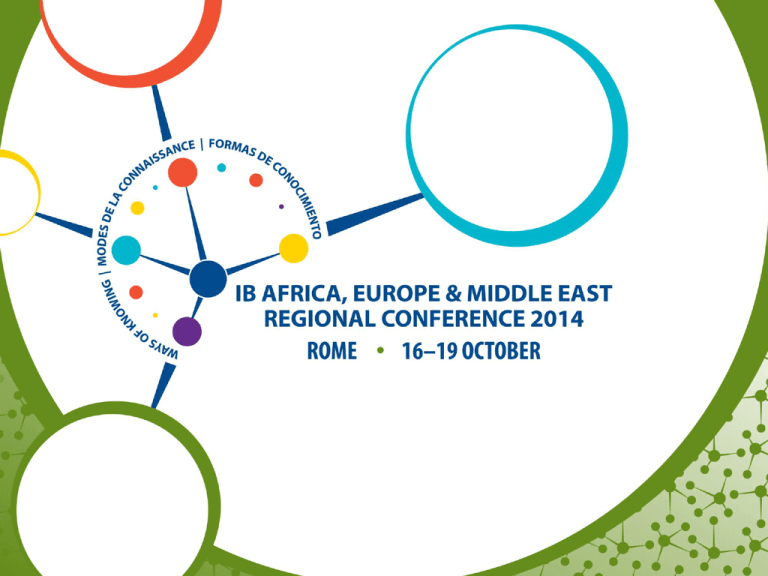
2 Concepts, combined with knowledge and skills, develop intellectual depth and deeper understandings 3 When we first arrived at KBS in 2010 this is what our classrooms looked like… …we realised that something had to change!! 4 5 In December 2010 we were accepted as a candidate school for the PYP and so, our journey began… 6 Classrooms started looking like this… 7 We got out into our community... …(and not just to the Scientific Centre!!) 8 Students started reflecting on some of their actions and making informed, healthy choices 9 Our students kick started their creativity… Grade 4 Stop Motion 10 …and assessments became about more than memorising facts for quizzes and tests!! 11 Notice the change? We were getting there… 12 But we were still pretty much completely confused about how these things… …and how they fitted in to the big scheme of things (other than in box 2 on our PYP planners) 13 With concepts as our next focus we found this book… And then, a workshop in Dubai presented by the author. Yes please!! (and off we went) The date was January 2014 14 We did some serious reflection about… What do thinking classrooms look like? How can we move from a two-dimensional… to a more effective threedimensional model for curriculum and instruction to foster thinking classrooms? 15 How is knowledge structured? How can we USE this structure to focus teaching and learning, and significantly improve the academic performance of all students? What is concept-based curriculum? 16 How is it different from the traditional topic/skill-based curriculum? How do we scaffold thinking from lower to higher levels? What is a conceptual lens and why is it essential to develop higher levels of thinking, and increased motivation for learning? 17 Information without Intellect is Meaningless Critical, Creative, Reflective Curious, Playful Metacognitive 18 Traditional Curriculum... is Topic Based HISTORY: Early European Migration, World War I and II, our Australian government, Indigenous Peoples of Australia, the Irish Potato Famine, Adolph Hitler, The Holocaust, The Industrial Revolution… Language Arts: The Cat in the Hat,, Shakespeare, British literature, the eight parts of speech … Science: The Earth’s crust, the solar system, the human body, the rocks and minerals, living things… 19 versus 20 Two-dimensional versus Three-dimensional Coverage-centered “inch deep, mile wide” Idea-centered -facts and skills provide a foundation to understand conceptual, transferable ideas. Intellectually shallow - lacks a conceptual focus to ignite synergistic thinking Intellectual depth -a “conceptual lens,” or focus, requires mental processing between the lower and conceptual levels of thinking – producing intellectual depth and understanding. © 2010 H. Lynn Erickson 21 Two-dimensional versus Three-dimensional Inability to transfer factual knowledge - facts do not transfer; locked in time, place, or situation. Fails to meet the intellectual demands of the 21st century Concepts and Generalizations Transfer -allows the brain to make connections and see patterns. Develops the intellect to handle a world of increasing complexity and accelerating change. The Structure of Knowledge The Structure of Knowledge 1. People migrate to meet a variety of needs. 2. Migration may lead to new opportunities or greater freedom. • Migration • Opportunity • Needs • Hardship Westward Movement Early American settlers migrated west. Early American settlers looked for new opportunities. 23 The Structure of Knowledge Facts: Provide support for Principles and Generalizations. Locked in time, place or situation. Do not transfer. 24 The Structure of Knowledge 25 Topics: Specific; Locked in time, place or situation. Do not transfer. The Structure of Knowledge 26 Concepts: Mental constructs drawn from the topic Concepts transfer 1 or 2 words or a small phrase, Timeless, Universal, Abstract to different degrees The Structure of Knowledge 27 Principle: A generalization that rises to the level of a Law or Axiom. Does not use qualifiers. Generalization: Two or more concepts stated in a sentence of relationship that transfers through time across cultures and across situations. Supported by the facts. The Structure of Knowledge 28 Theory: A supposition or set of conceptual ideas used to explain a phenomenon or practice. 29 Concepts vs. Topics 30 Remember Concepts – transfer, timeless, universal, abstract Topics – do not transfer, specific, locked in time, place or situation 31 Now it’s your turn! Using the cards provided, decide with those around you whether they are concepts or topics. 32 The benefit of using concepts is that they can provide direction to a unit. They give teachers and students a focus for their learning. They allow for a deeper understanding in the unit. Exploration/discovery Resources 33 Change/ societies Our World Cultures/ beliefs Natural disasters Government/ function 34 Connection Change/ inventions Transportation Form/ function Pollution/ responsibilities 35 So, now let’s have a go at using some conceptual lenses to see the different direction you can take a unit. ? 36 ? ? Our Community ? ? ? ? 37 Now let’s see how we can use concepts to write some really strong generalisations (aka central ideas) 38 GENERALIZATIONS are SUMMARIES OF THOUGHT “WHAT DO I UNDERSTAND as a result of my study that I can TRANSFER?” GENERALIZATION= Essential or Enduring Understanding, Statement of Inquiry or Central Idea Two or more concepts in a relationship... CONCEPTUAL IDEAS THAT TRANSFER DEVELOP “DEEP UNDERSTANDING” 39 40 When we teach to the levels of concepts and generalizations we are teaching for deep understanding and the transfer of knowledge. 41 All cultures have celebrations. 42 Level 1 Verbs (“No No” Verbs) affects | impacts | influence | is, are, have 43 Checking Our Generalizations No proper or personal nouns No pronouns in sentence (“our, we, they…”) Has a present tense verb Contains at least two concepts Is a transferable idea that is supported by the factual content May need a qualifier (“often, can, may”) if not true in all situations – but is still an important idea Scaffolding Thinking Scaffolding Thinking to Complex Levels 45 Social Studies Level 3 Traditions help to unify a people. Level 2 So what – is the significance or effect? Celebrations express traditions of a culture. Level 1 Why do cultures have celebrations? All cultures have celebrations. 46 Why do we need to move away from Level 1 generalizations? No students should have to settle for Level 1 Generalizations They do not provide enough depth of study. They are flat, evident and there is a low potential to extend thinking. . All students should work with Level 2 Generalizations. This allows students to get in to the ‘why’ and demonstrate a deeper understanding. They show the significance or effect that’s hiding in a Level 1 Generalization. More advanced students may be challenged by exploring Level 3 Generalizations. The students will get in to the ‘so what’ and go one step further past the ‘why.’ Level 3 Generalizations probe for deeper significance or impact behind a Level 2 Generalization. 47 Now it’s your turn 48 SO WHAT? So what do we do with all of this? How has using concepts to drive the development of our Central Ideas helped our students develop a deeper understanding of concepts so that their knowledge and skills are transferable? 49 In Class…… Using Conceptual Lenses In Planning….. Developing central ideas and the curriculum. 50 Thank you
